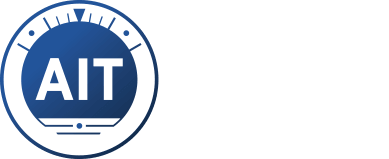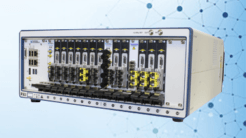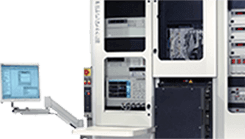Business Benefits of a SaaS Solution for Fleet FLS Distribution
As the world becomes increasingly digital, more and more companies are turning to Software as a Service (SaaS) to help them run their operations. SaaS is a cloud-based software delivery model that offers many benefits over traditional on-premises software deployment, including lower costs, faster deployment times, and greater flexibility. So that our customers can take advantage of the many benefits a SaaS application can provide, AIT recently launched a SaaS-hosted application for our Fleet Data Command Center Solution.

In this blog, we will explain the differences between a SaaS delivery model and an on-premises software deployment model and focus on the many advantages provided by SaaS solution.
Definitions of each software deployment model
First, let’s define each software delivery model. Software as a Service (SaaS) is an on-demand or web-based software hosted on a cloud service provider’s (CSP) infrastructure. The CSP vendor manages the entire SaaS platform and users access the software through an internet connection. A subscription-based SaaS solution uses SaaS software licenses that businesses pay for on a monthly, quarterly, or annual basis.
An on-premises installed software application refers to software that is installed and hosted directly on a company’s servers that reside within their data center(s). To use on-premises software, a company must buy or rent a license or a copy of the software and install and configure it on a server(s). As the licensee, the company then takes responsibility for operating the software within its own data center. Thus, the task of maintaining functionality and performance is transferred to the user (licensee). The user is responsible for ensuring that timely software updates and data backups are done to prevent downtime, service interruption, and other operational issues. In addition to licensing fees, there are also ongoing maintenance expenses associated with on-premises software.
With definitions provided, let’s now compare and contrast each model to showcase the advantages and business benefits a SaaS solution can provide for your operations.
Lower costs
A SaaS solution eliminates the traditional on-premises upfront costs for hardware, software, and software licensing as well as the ongoing costs associated with maintaining an on-premises server farm or data center. With SaaS, no time and resources are required for software upgrades, routine maintenance, or paid overtime to deal with unplanned outages. Your IT department’s installation and maintenance duties (and costs) are eliminated and transferred to the SaaS vendor. Also, maintenance costs are also drastically reduced due to economies of scale. Since the SaaS provider owns the multi-tenant environment, it allows maintenance costs to be divided amongst all customers using the solution.
Additionally, SaaS pay-as-you-go subscription licensing allows you to pay just for what you use, rather than overpaying for licenses that aren’t used. Contrast this to an on-premises solution which requires making a significant upfront investment in software and hardware that typically factors in 3-5 year growth projections. Most times, you pay for resources you will never utilize.
Robust security and reliability
A primary benefit of SaaS is it is considered by industry experts to be more secure and reliable than most on-premises solutions. SaaS service providers invest heavily in security and have state-of-the-art cybersecurity resources with in-house IT expertise to manage them. They also provide robust disaster recovery solutions with multiple data centers that store business data in geographically dispersed data centers. Continuity of service is assured, SaaS SLAs come with a guaranteed uptime agreement that are customized to your requirements.
In contrast, it can be a challenge for a company whose expertise is air transportation or package delivery to compete with the level of security and reliability provided by a CSP whose expertise is building resilient infrastructures with cybersecurity best practices incorporated into its service delivery model. Most companies simply cannot invest the same level of resources (systems, people, and time) as a CSP to ensure robust security and reliability requirements are being met.
Improved accessibility and flexibility
Because SaaS applications do not need to be run on specific computers or from a particular office space, users can access them from any device, anywhere that has an internet connection. Since your team can access the software on any device, anywhere, at any time, it means that productivity and efficiency can increase.
The SaaS models pay-as-you-go approach offers tremendous flexibility. At any time, you have the ability to adjust your SaaS usage up and down based on your unique requirements.
Faster deployment times
The beauty of SaaS is that you can be up and running almost instantly with zero involvement needed from your IT department. SaaS doesn’t require installation and will already be configured for optimum usage, so users can start using it immediately. Users can simply access the software via the internet and start using it almost immediately without waiting for lengthy installation and configuration processes to be completed. Faster deployment times mean businesses can benefit from SaaS product new features and functionality sooner and realize the ROI of their investment faster.
In contrast, installing on-premises software is a time-intensive process that requires IT personnel and expertise. IT will have to design the solution from scratch, purchase the hardware and software, and then install the servers and configure the software across on-premises locations before you can start leveraging the application for your operations. Bottom line, it is a much longer wait before you can start to gain the benefits of the application.
Automatic software updates
With SaaS applications, there is no need to worry about upgrades anymore. Maintenance and operational responsibilities belong to the SaaS provider. When the vendor upgrades its software, you will instantly have access to the updated version. You will always be using the most up-to-date, secure, and efficient version.
SaaS providers routinely update software to minimize potential zero-day security attacks while providing improvements to the users’ application experience. SaaS software updates remove application bugs and make the application more user-friendly by adding improved features that help users become more proficient in using the application.
With traditional on-premises software, you are reliant on the IT department to keep on top of these updates. IT will need to make the updates across all devices plus ensure they do it in a timely manner to reduce the risk of compatibility and/or security issues. All of which takes time and money.
Increased scalability
Scalability is another notable feature of SaaS that promotes its usage. Because the product is cloud-based, it can easily be adapted to the changing needs of your business. For example, if you are expanding your operations and the associated fleet, you can simply add more users to your SaaS system and you are immediately addressing evolving business needs.
This type of seamless scalability is not possible with on-premises software, which often requires significant upfront investment and a long-term commitment. License expansion and deployment across on-premises sites can be time-consuming and costly.
Environmentally friendly
The SaaS model is also more environmentally friendly than the traditional on-premises model. SaaS application infrastructure use less energy and resources than on-premise software infrastructure due to economies of scale. Moreover, most SaaS providers use green energy to power their servers, reducing their environmental impact.
Interested in more information about AIT’s FDCC-SaaS:
For FDCC-SaaS pricing and availability, please contact .








